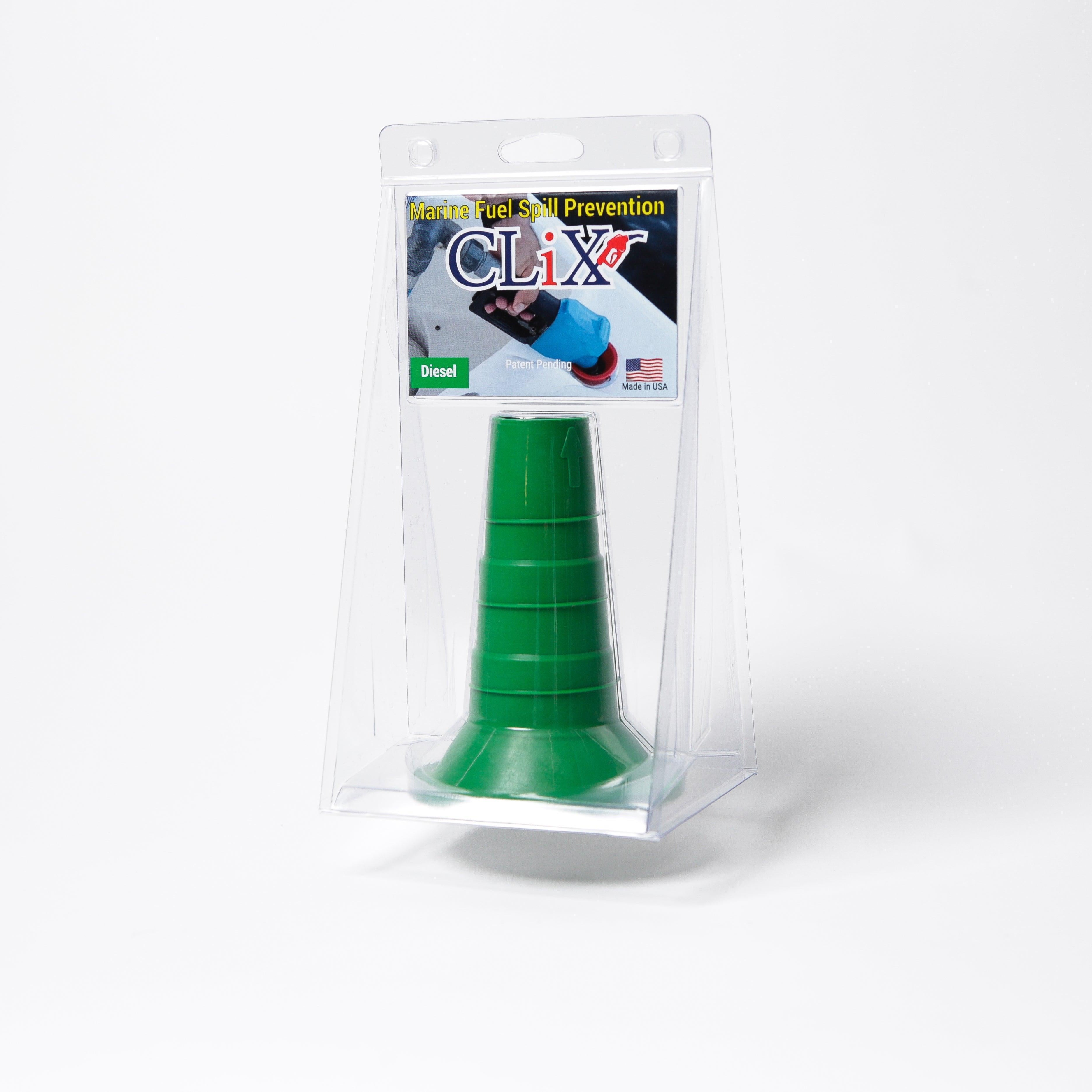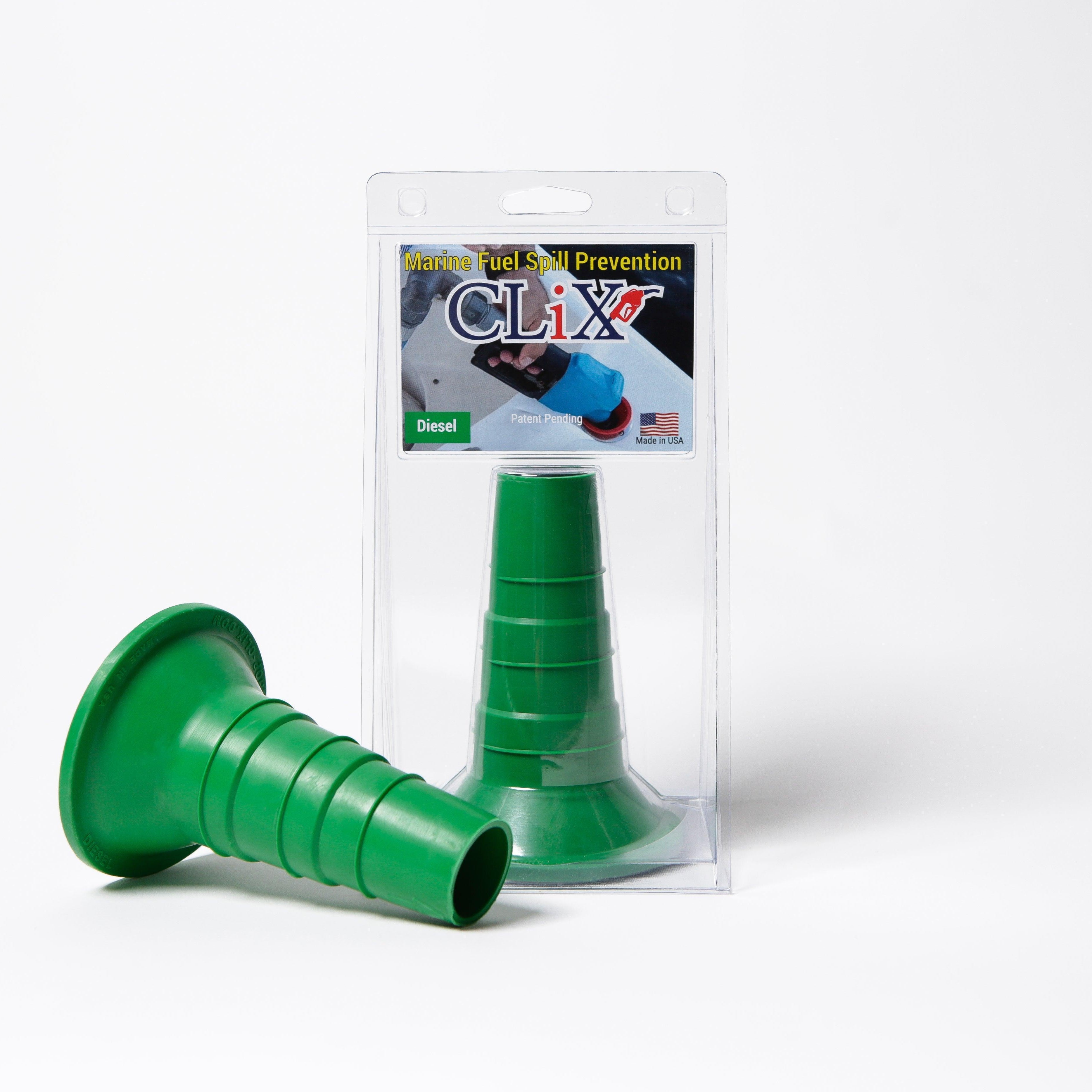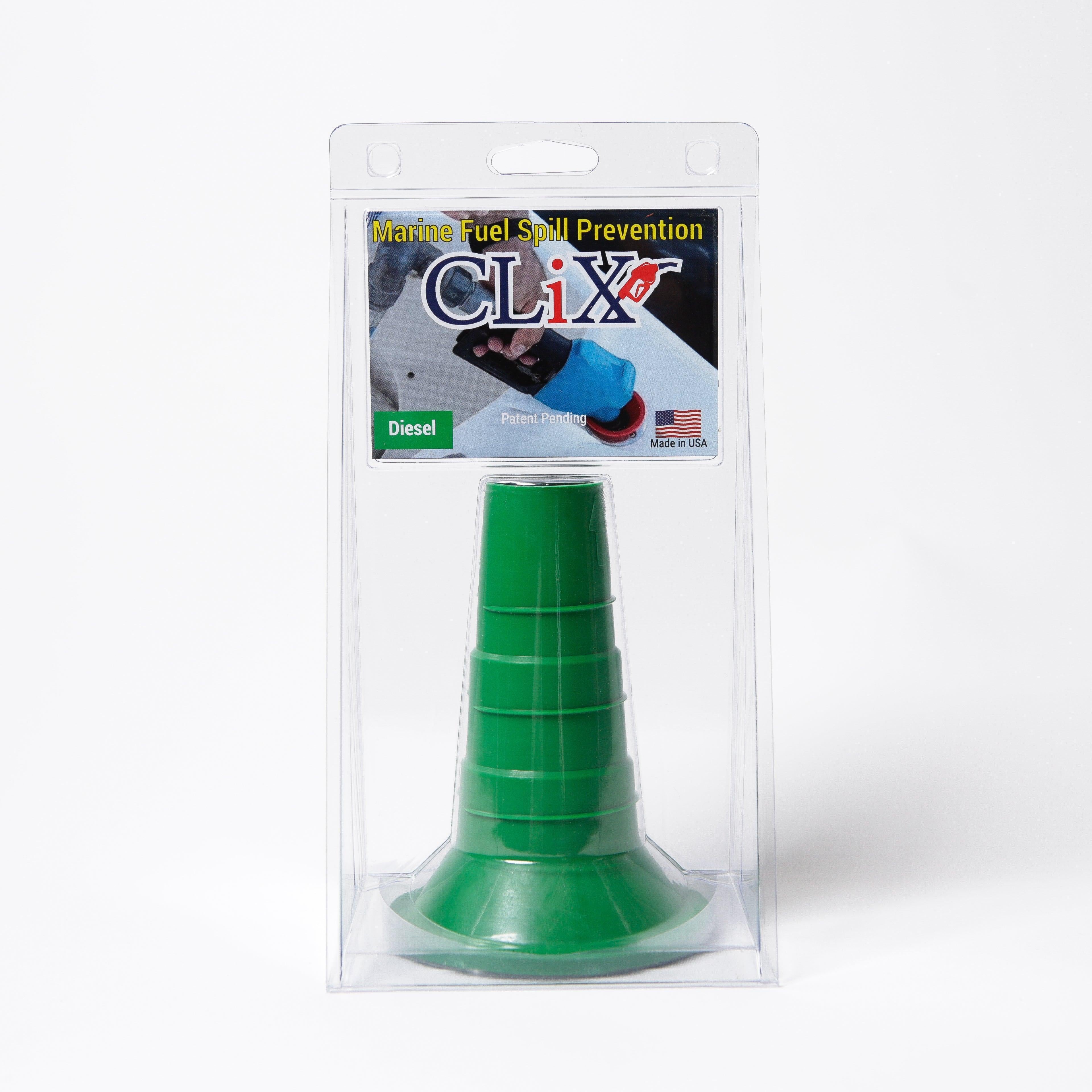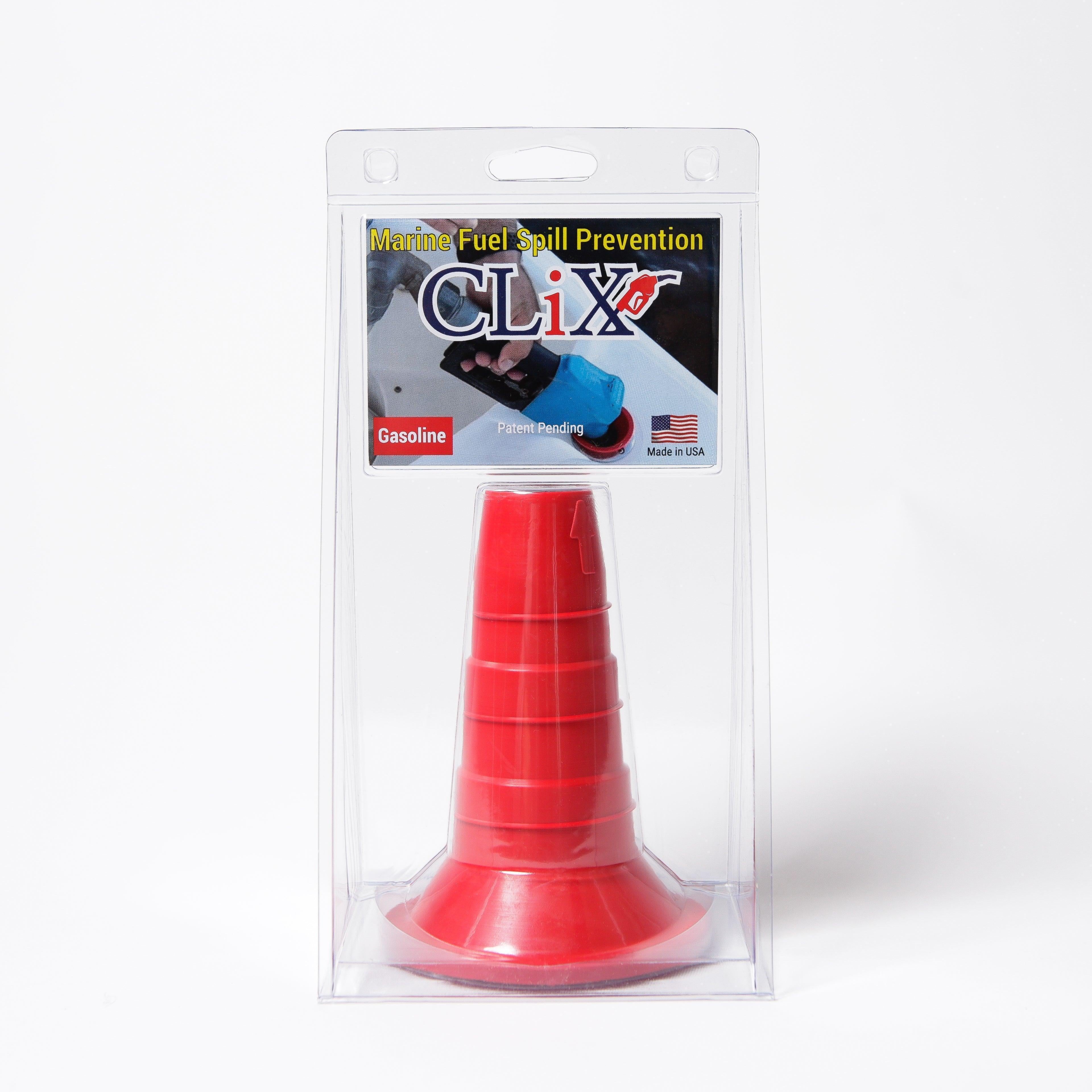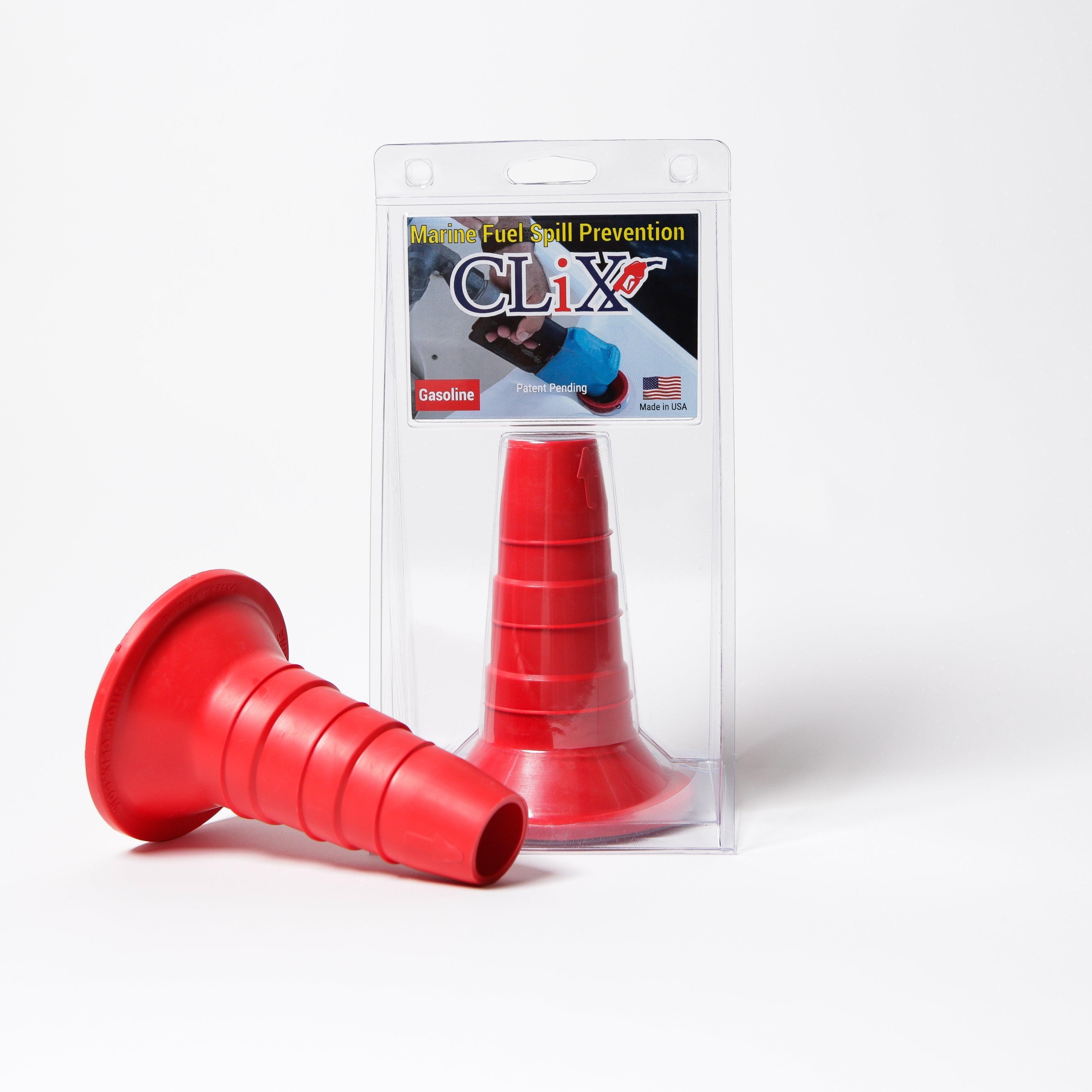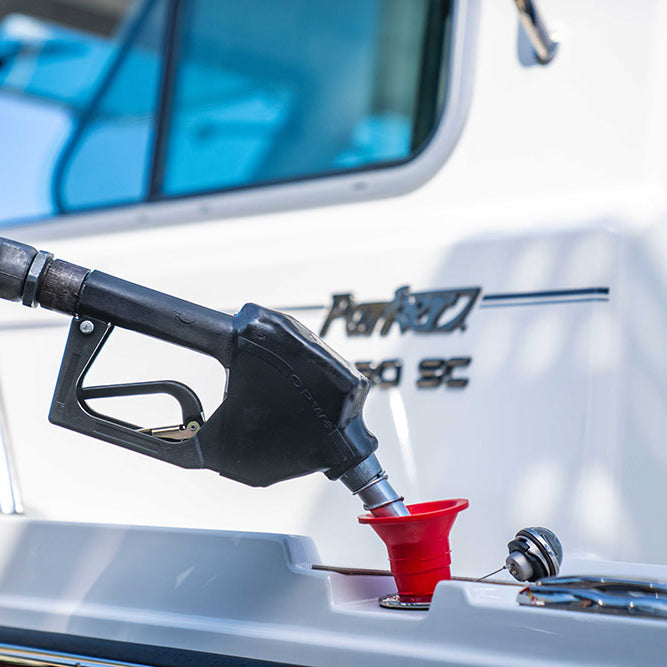Picking the right gas can for your jet ski isn't just about convenience. It’s about protecting your PWC, keeping yourself safe, and making sure you don't harm the water you love to ride on. A solid, marine-grade fuel can is a must-have for any rider who wants to avoid messy spills and stay on the right side of the law.
Your Go-To Guide for Fueling Your Jet Ski
Welcome to the ultimate guide for choosing and using gas cans for your jet ski. If you’ve ever fumbled with fueling on the water, you know the drill—messy spills, wasted gas, and that nagging worry about safety. This guide cuts through the confusion, breaking down everything you need to know from the ground up.
The world of personal watercraft is exploding. The global market hit a whopping USD 5.3 billion in 2024 and is expected to climb to USD 8.11 billion by 2035. Think about this: over 90% of jet skis sold in 2023 run on gasoline, which means nearly every rider out there needs a reliable way to carry extra fuel. You can dig into more of the PWC market growth data if you're curious.
What We'll Cover
This guide will walk you through everything you need to know to pick the perfect gas can for your jet ski, so every trip is smooth and worry-free. Here's what's on tap:
- Gas Can Types and Features: We’ll look at materials, capacity, spouts, and venting systems.
- Safety and Legal Stuff: Learn how to transport fuel legally and handle it without any drama.
- Fueling On the Water: Get the best practices for a spill-free refueling experience.
- Care and Storage: Keep your cans and fuel in prime condition for the long haul.
But first, let’s get a quick snapshot of what to look for.
Quick Comparison of Gas Can Features
This table gives you a high-level look at the key features to consider when you're shopping for a gas can. It’s a great starting point before we dive into the nitty-gritty details.
| Feature | Material Type | Common Capacity | Key Benefit |
|---|---|---|---|
| Durability | High-Density Polyethylene (HDPE) | 5 Gallons | Resists UV rays and corrosion, perfect for marine use. |
| Portability | Metal (Steel/Aluminum) | 2.5 - 5 Gallons | Tough and rugged for transport in rough conditions. |
| Safety | Spill-Proof Spout | Varies | Stops accidental spills and keeps fumes contained. |
| Compliance | EPA/DOT Certified | All Sizes | Guarantees legal transport and environmental safety. |
Think of this as your cheat sheet. Now, let’s get into what makes each of these features so important for a PWC owner.
Choosing the Right Gas Can for Your PWC
Let's be honest, not all gas cans are built the same. This is especially true when you’re talking about taking one out on the water. Picking the right gas can for your jet ski isn't about grabbing the cheapest one off the shelf; it's about finding one that’s safe, tough, and won't make a mess when you're miles from shore.

Think of your gas can as a piece of safety equipment, just like your life vest. A flimsy can might seem like a bargain at first, but it quickly becomes a hazard when it’s baking in the sun, getting hit with saltwater, and rattling around in your storage compartment. Investing in quality from the start is the key to worry-free refueling.
Choosing the Right Material
The material of your gas can is its primary defense against the harsh marine world. Today, most cans are made from High-Density Polyethylene (HDPE), a robust plastic that’s perfectly suited for life on the water.
-
HDPE (Plastic) Cans: These are the go-to for most riders. They’re lightweight, they’ll never rust, and they're easy on the wallet. Just make sure you get a model designed for marine use—these usually contain UV inhibitors that stop the sun from making the plastic brittle over time.
-
Metal Cans: If you need something nearly indestructible, metal is the way to go. These cans, usually steel or aluminum, can take a serious beating. The downside? Steel can rust if it gets scratched, and both are much heavier and pricier than plastic. They're a solid choice if you're hauling fuel over rough roads to get to the launch.
No matter which material you choose, give it a good look-over. A tight-sealing cap and solid, one-piece construction are non-negotiable.
A gas can’s ability to withstand the marine environment is non-negotiable. Saltwater accelerates corrosion on metal and UV rays degrade standard plastics, making specialized marine-grade cans a wise investment for any PWC owner.
Sizing Up Your Fuel Needs
So, how much extra gas do you actually need to bring along? It really boils down to your jet ski’s fuel tank size, its average fuel burn, and how long you plan to ride. For most people, a 5-gallon can hits the sweet spot, offering plenty of reserve fuel without being too bulky to handle.
A good rule of thumb is to figure out your PWC's typical consumption. If you usually end a day on the water with half a tank left, a 5-gallon backup should be more than enough. For those epic all-day adventures or for thirstier high-performance skis, you might even consider bringing two smaller cans instead of one large one to keep the weight balanced.
Demystifying Spouts and Venting
Let's talk about the part where things can get messy: the spout. This is where most spills happen. Modern gas cans for jet skis are legally required to have spill-proof spouts, but some designs are a real pain to use—especially when you’re trying to pour fuel on a bobbing PWC. Look for a spout that feels intuitive and lets you control the flow easily.
Venting is the other half of the equation. Old-school cans had a simple little screw-on vent. Today's cans have automatic or push-button vents that do two crucial things: they stop fumes from escaping and prevent fuel from sloshing out. This also eliminates that frustrating "glug-glug-glug" as you pour, giving you a smooth, fast flow.
For a closer look at what makes a great can, check out our guide to the essential features of a marine gas can. Ultimately, a well-designed spout and vent system is what separates a clean refueling from a frustrating, fuel-soaked mess.
How to Legally and Safely Transport Fuel
Getting your extra fuel from the gas pump to the boat ramp is a bigger deal than just tossing a can in the back of your truck. You’re hauling a flammable liquid, and that comes with some serious safety rules and legal responsibilities. It’s a critical part of your pre-ride checklist, right up there with checking your PWC’s oil or battery.
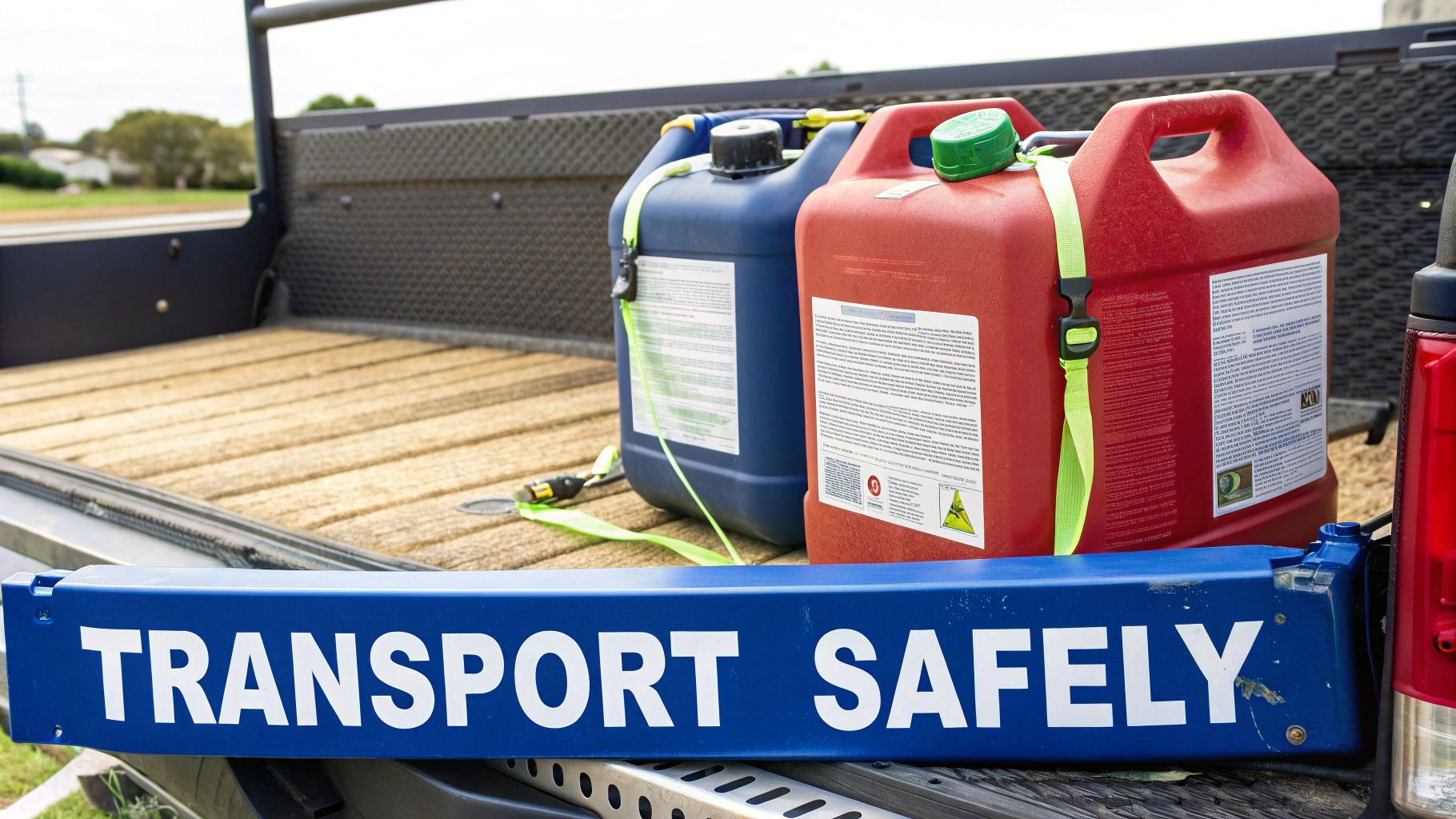
Cutting corners here isn’t just about avoiding a ticket; it's about preventing a disaster. A loose can tipping over or a cap leaking fumes can turn your vehicle into a tinderbox. Let’s walk through how to do this the right way.
Understanding the Rules of the Road
When you're carrying gas cans for jet skis, you can't just use any old container. Federal standards are in place for a reason, and your cans need to meet them.
- DOT Compliance: Look for cans approved by the Department of Transportation. A DOT-compliant can has been rigorously tested to handle impacts and resist leaking, even in rough transit.
- EPA Compliance: The Environmental Protection Agency has rules about fuel emissions. An EPA-compliant can will feature a self-venting, spill-proof spout designed to keep gasoline vapors from escaping into the air.
You should see markings like "DOT Approved" or "Meets EPA/CARB Standards" stamped right on the can itself. Think of these as your guarantee that the can is built for the job.
Securing Your Gas Cans for Transport
Once you've got a compliant can, you absolutely must secure it. A full 5-gallon can weighs over 30 pounds—if you slam on the brakes, it can become a dangerous projectile. Worse, an unsecured can can easily tip over, leaking fuel and filling your vehicle with highly flammable fumes.
Never transport a gas can inside the passenger cabin of your vehicle. The buildup of gasoline fumes in a closed space is incredibly dangerous and can be ignited by the smallest spark.
The safest place is in the bed of a pickup truck, a trailer, or a well-ventilated trunk space—anywhere far from passengers. Use bungee cords or ratchet straps to lock the can in an upright position so it can't slide around or tip over. If you can, wedge it against a solid surface for some extra stability.
Critical Safety Protocols During Transport
Beyond just tying it down, a few other simple habits can prevent a world of trouble. Before you even start the engine, double-check that the cap and spout are screwed on tight. A seal that seems "good enough" can easily vibrate loose on the road.
Also, think about ventilation. If your can is in an enclosed space like an SUV cargo area, crack a window. This tiny step is huge for preventing fumes from building up to dangerous levels. Follow these rules, and you’ll get yourself and your fuel to the water without a hitch, ready for a great day on your ski.
Mastering On-the-Water Fueling Techniques
Fueling a jet ski on open water can feel like a high-stakes balancing act. But it doesn't have to be a source of anxiety. With the right approach and a little bit of preparation, you can make it a clean, safe, and quick pit stop so you can get right back to riding. It all boils down to setting the stage for a smooth fuel transfer.
First things first: find a calm, sheltered spot. Trying to refuel in choppy water is asking for trouble, as both your PWC and the gas can will be rocking and rolling. Once you've found a good spot away from heavy boat traffic, kill the engine. This is non-negotiable—a stray spark from a running engine is all it takes to ignite fuel vapors.
Preparing for a Spill-Free Experience
Before you even touch a gas cap, get your gear organized and within arm's reach. Have your gas can, spout, and a few absorbent pads ready to go. A little prep work here saves you from that clumsy, one-handed juggle that almost always ends in a spill.
Make sure anyone else on board is seated and knows what's happening. A sudden shift in their weight can rock the PWC at the worst possible moment. If you have a passenger, ask them to help by steadying the ski or handing you the equipment.
Safety First: A fuel spill isn't just a mess. The U.S. Coast Guard can hit you with serious fines for spilling fuel in navigable waters. Even a tiny amount can contaminate a huge area, so proper technique protects both the environment and your wallet.
The Step-by-Step Fueling Process
With everything in place, you can start fueling. Following these simple steps will dramatically lower your risk of spilling fuel and make the whole process go a lot smoother.
- Position the Can: Set the gas can for your jet ski on a stable surface, like the swim platform or in a footwell. You want it secure so it won't tip. Trying to hold a heavy, full can while pouring is a recipe for disaster.
- Vent the Can: Before opening the main spout, slowly open the vent cap. This releases pressure that builds up as the can heats up in the sun, preventing a sudden geyser of fuel when you go to pour.
- Secure the Spout: Attach the spout to the can securely, then insert the tip deep into your PWC’s fuel fill opening. If you’re using a funnel, make sure it’s sitting snugly and won't wobble around.
- Pour Slowly and Steadily: Don't rush it. Start pouring at a slow, controlled rate. You can actually hear the tone change as the fuel fills the tank, which is a great cue that you're getting close to full.
- Avoid Overfilling: This is a big one. Stop pouring when the tank is about 90% full. This leaves a bit of "slosh room" for the fuel to expand as it warms up, which prevents it from overflowing out of the tank's vent line.
Embracing Modern Fueling Solutions
Let's be honest, the old tip-and-pour method works, but it leaves way too much room for error. This is exactly why modern fueling systems have become such a game-changer—they take the risk and guesswork completely out of the equation.
Take a system like CLiX Fueling, for instance. It creates a sealed, locked-in connection from the gas can right to your fuel tank, which makes spills practically impossible. The nozzle is designed to automatically shut off the flow once the tank is full, so overfilling is no longer a concern. This not only keeps our waterways clean but also makes refueling faster and a whole lot less stressful. You can dive deeper into how to correctly use a boat fuel fill and sidestep common issues in our detailed guide.
Proper Gas Can Maintenance and Storage
Taking good care of your gas cans for jet skis isn't just about making them last longer—it’s about protecting your PWC's engine from some serious, and seriously expensive, damage. Think of it like winterizing your jet ski. A little prep work for your fuel gear now saves you from a world of hurt when you're itching to get back on the water.
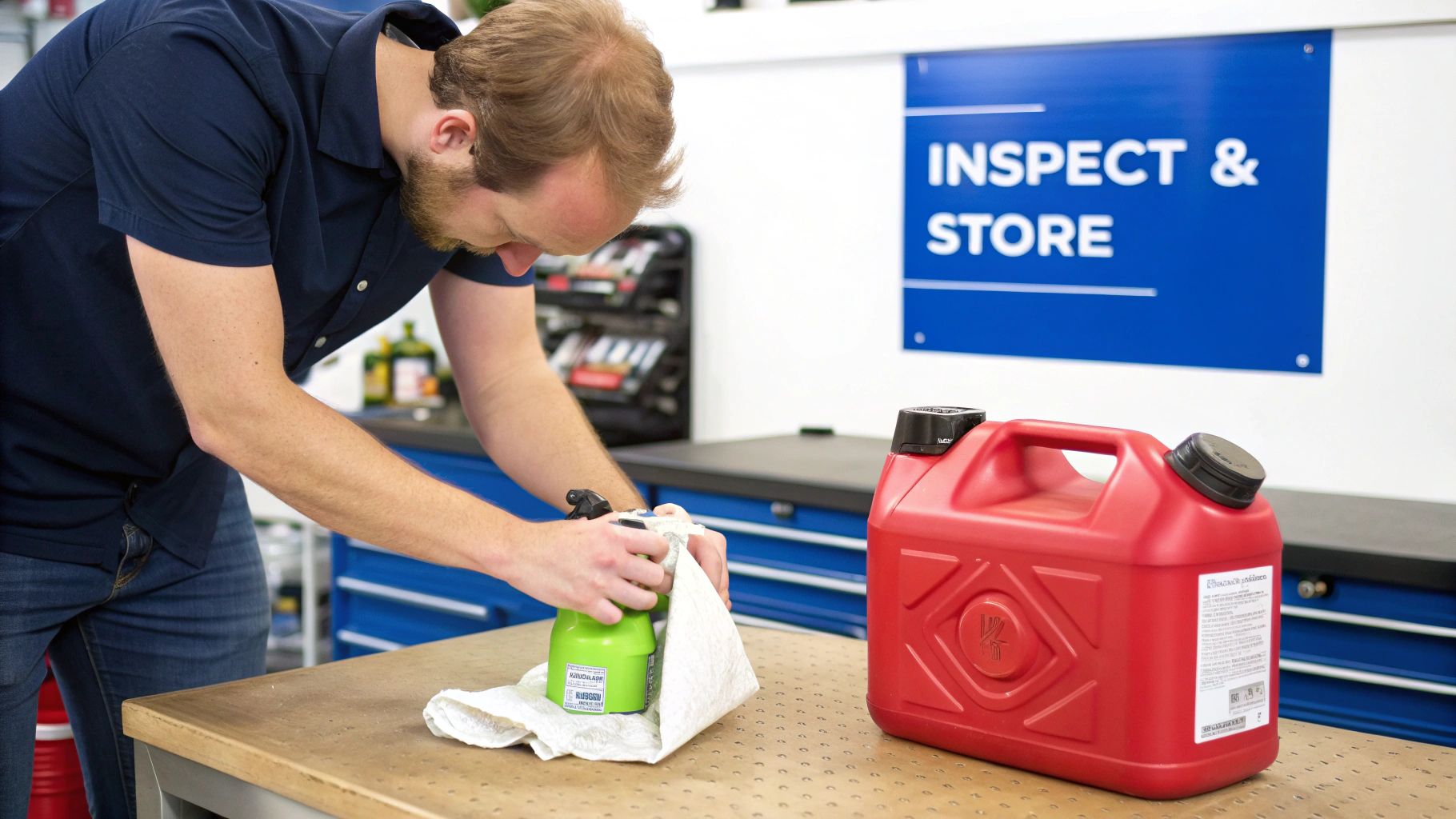
A dirty, forgotten gas can is basically a Trojan horse for your fuel system. All that gunk, water from condensation, and old, sludgy fuel is just waiting to get poured into your jet ski's tank. That’s a fast track to clogged injectors, rough running, and a ruined day. A few simple habits will stop this from ever happening.
Pre-Storage Cleaning and Inspection
Before you put your cans away for the off-season, you've got to clean them out. Any fuel, moisture, or dirt left inside is just asking for trouble.
- Empty and Air Out: First, get every last drop of gas out. Then, find a well-ventilated spot—far away from any heat or sparks—and leave the cap off. This lets the fumes escape and helps the inside dry out completely.
- Inspect for Damage: Once it’s dry, give the can a good once-over. You’re looking for any cracks, especially along the seams and around the handle where stress happens.
- Check the Seals: Take a close look at the rubber gaskets on the cap and spout. Are they brittle, cracked, or worn? If so, they need to be replaced. A bad seal won't keep fumes in or water out.
This quick checkup can mean the difference between a can you can trust and one that’s leaking dangerous fumes.
A compromised gas can is a serious safety hazard. Regular inspections for cracks, leaks, or degraded seals are non-negotiable. If you find significant damage, it's always safer and cheaper to replace the can than to risk a fuel leak.
Ideal Storage Conditions and Fuel Care
Where you store your gas cans is just as important as how you clean them. The idea is to keep the can safe from the elements and ensure any fuel you're storing stays fresh. For an in-depth look at long-term storage, our guide on how to store gasoline safely covers all the essentials.
- Cool and Ventilated: The best spot is a detached shed or a garage, well away from direct sunlight and heat sources like a furnace or water heater. Heat is the enemy of fuel.
- Use a Fuel Stabilizer: If you absolutely have to store a can with fuel in it, make sure you add a quality fuel stabilizer. It stops the gas from breaking down into the gummy varnish that wrecks engines. A good stabilizer can keep fuel fresh for a year, sometimes longer.
This isn't just good advice for us—it's a global need. The PWC market is booming, especially in the Asia-Pacific region. China's market alone is growing at a 6.8% annual clip, which is huge. It just goes to show that no matter where you ride, safe fuel handling is a universal language.
Got Questions About Jet Ski Gas Cans? We’ve Got Answers.
When you're dealing with gas cans for jet skis, a few questions always seem to pop up. Getting straight answers is the key to fueling up confidently and making sure you have the right gear for a day on the water. Here, we'll tackle the most common questions PWC owners ask.
Think of this as your personal FAQ. We want to clear up any confusion so you can spend less time worrying and more time riding. Let's get into it.
Can I Just Use a Regular Car Gas Can for My Jet Ski?
It's tempting to grab that red can from the garage, but using a standard car gas can for your jet ski isn't a great idea. Sure, it'll hold gas, but the marine world is a whole different beast. Cans designed for marine use are built with UV-resistant plastics that won't get brittle after baking in the sun all day.
They're also made to take a beating—the constant vibrations and jarring slams that are just part of life on a PWC. The most important things are making sure your can is EPA and DOT compliant and has a spout you can actually handle on an unstable surface. A spill-proof system designed for the water is always the smarter, safer, and cleaner choice for protecting your ski and the lake.
You can use a car gas can in a pinch, but don't make a habit of it. Spending a little extra on a proper marine-grade can is a small price to pay for safety and peace of mind when you're miles from shore.
How Long Can I Store Gas in a Portable Can?
You might be surprised to learn that untreated gasoline starts going bad pretty fast—sometimes in as little as 30 days. As the fuel breaks down, it creates varnish and gunky deposits that will clog up your jet ski's fuel injectors or carburetor. That leads to rough performance and some seriously expensive repair bills.
If you know you'll be storing fuel for more than a month, a good fuel stabilizer is non-negotiable. The trick is to add it to the gas can right when you fill it up. A quality stabilizer can keep your fuel fresh and ready to go for a year or even longer. Just remember to store the can in a cool, dry, well-ventilated spot away from direct sunlight to give the fuel its best shot.
What's the Best Way to Avoid Spilling Fuel in the Water?
This is a big one. Preventing fuel spills is probably the most important part of refueling on the water. The single best way to stop spills before they happen is to use a fueling system specifically built for the job. Tipping a heavy can and trying to pour is just asking for trouble, especially when you factor in wind and waves.
If you have no other choice, use a long, stable funnel and only try refueling when the water is dead calm. But the far better approach is a dedicated spill-proof system. These create a sealed connection from the can to your fuel tank, which makes spilling almost impossible. Also, never fill your tank to the brim—leave about 10% of empty space for the fuel to expand in the heat. And it never hurts to have a few absorbent pads ready just in case.
Why Are Gas Cans Different Colors?
The colors aren't for looks; they're a critical safety standard. This universal color-coding system is designed to prevent you from accidentally putting the wrong fuel in an engine, which can destroy it in seconds. Each color signals a specific type of fuel, so you can tell what's inside at a glance.
- Red Cans are always for gasoline.
- Yellow Cans are for diesel fuel.
- Blue Cans are for kerosene.
Always stick to the right color. It's a simple habit that protects your expensive PWC from a catastrophic mistake.
For a truly spill-free way to refuel that takes all the guesswork out of the equation, CLiX Fueling Solutions offers a system that creates a secure, sealed connection to your PWC. It even stops the flow automatically when the tank is full, preventing dangerous and messy overflows. Learn more about making your next refueling safer and cleaner at https://clixfueling.com.

